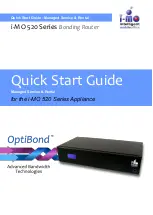
41
Appendix II
AT Commands
AT COMMAND SYNTAX
The "AT" or "at" prefix must be set at the beginning of each command line. To terminate
a command line, enter <CR>. Commands are usually followed by a response that
includes "<CR><LF><response><CR><LF>".
Parameter […]
Specify user-definable parameter values, which may be <text> or <number>.
(ERR_STR)
If a connection fails, the response may include a string after the message “NO
CARRIER”, providing further information on the connection error.
[ERR_CODE]
If a connection fails, the response will always include a 6-digit hexadecimal number
(always starting with “0x”). Refer to the Error Code table for detailed information.
Note: If you are programming in BASIC language, the delimiter 0x0d (CR) is in use by
default. Refer to COM_DELIMITER().
The escape sequence consists of three characters “+++”. Once a connection has been
established, type the escape sequence to return to command state. When entering the
next command after an escape sequence, always wait to receive “\r\nOK\r\n”. An escape
attempt in the interval may fail because the modem is not in on-line data state. There
are equal guard time periods before (leading) and after (trailing).
The “+++” timing for this escape sequence is as illustrated below.
If the escape sequence is not followed by another command within 1 second (trailing guard time),
the cradle will hang up immediately. Normally, the mobile computer will receive the message “OK”
unless the line is abnormally busy.
Note: The escape sequence will break the connection. The Guard Time is 1 second and
cannot be changed.
















































